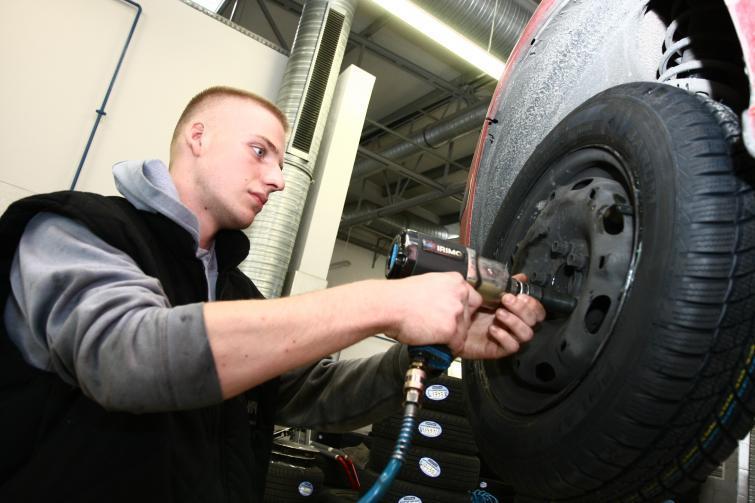
Winter tires - selection, replacement, storage. Guide
 With winter tires, you should not wait for the first snow. It is better to put them on now, when the first frosts appear. Because even in such conditions they have an advantage over summer tires.
With winter tires, you should not wait for the first snow. It is better to put them on now, when the first frosts appear. Because even in such conditions they have an advantage over summer tires.
Experts recommend changing tires to winter tires when the average daily temperature drops below 7 degrees Celsius. Even if there is no snow and frost yet. The braking distance of a car on summer tires in such conditions begins to lengthen. This may result in a collision or accident.
Summer tires are too hard
– The rubber compound that summer tires are made of loses its properties, such as elasticity and grip, because it becomes stiff. And at zero or minus a few degrees, it seems that the car is skating,” explains Zbigniew Kowalski, deputy director of Motozbyt in Bialystok.
In turn, winter tires at sub-zero temperatures still provide decent grip and stopping distance, as they remain soft. However, when warm, they wear out much faster. But even now, when temperature fluctuations can be expected, it is better to use winter tires. Several trips in temperatures of plus 15 degrees Celsius will not cause excessive wear. Worse, when you drive in the summer, you run into an icy surface in the morning. - Winter tires have a lot of cuts, the so-called. plates, thanks to which they even bite into the snow or rotting leaves that lie on the roads in autumn, Kowalski emphasizes. This makes it easier to start on slippery roads and improves cornering grip.
Check tire tread
According to the regulations, the tread depth of tires must be at least 1,6 millimeters. But in the case of winter tires, this is definitely not enough. The tread here must be at least four millimeters. If the height is lower, buy new tires. Before replacing, make sure that the tires used in the previous season are not cracked or otherwise damaged. Let's check for deeper tread or sidewall tears that may have appeared after hitting curbs or potholes in the road.
It is also important that winter tires are fitted to all four wheels of the vehicle. Installing only two can seriously affect the stability of the car and lead to an accident. The tire size must be in accordance with the manufacturer's approval. “Although it was once said that winter tires with narrower sizes are better to choose because they are better, research shows that it is best to follow the manufacturer's recommendations when it comes to new car models,” notes Grzegorz Krul, Martom Service Manager in Bialystok.
Of course, there is room for maneuver. For most car models, several wheel sizes are approved. Information can be found on the fuel tank cap or in the owner's manual. If possible, consider installing slightly narrower tires for winter than for summer, which will be mounted on a smaller diameter rim. A wheel with a narrower tread and a higher sidewall profile will bite into the snow better and be less likely to be damaged after hitting a hole in the asphalt. The financial aspect is also important - such tires are cheaper than wide "low-profile" tires with high speed indexes.
Keep track of your tire pressure
Tire pressure should be checked at least once every two weeks. Wear that is too low results in wear of the tread sidewalls, increased fuel consumption and the risk of the tire pulling off the rim when cornering. On the other hand, too much wear on the central part of the tread reduces the grip of the tire on the road, which lengthens the braking distance and increases the likelihood of skidding. “When inflating tires at a temperature of a few degrees or less, it is worth driving 0,1-0,2 bar above the standard pressure,” Krol adds.
Tires are well kept
Changing tires on the spot costs an average of PLN 70-80. In most stores, summer tires can be stored until the next season. You have to pay PLN 70-100 for this, but for this price the tires should stay in the right conditions in winter. You can create them yourself in a garage or basement, remembering that the tires must be in a dry and dark room with a temperature of 10 to 20 degrees Celsius. There should be no oil vapors in it, and there should be no grease or gasoline around.
Tires and whole wheels can be stored on top of each other (maximum four). Every few weeks the lowest wheel or tire needs to be moved up. The tires themselves can also be placed vertically on the stand. Then you must remember to change the pivot point every few weeks.
